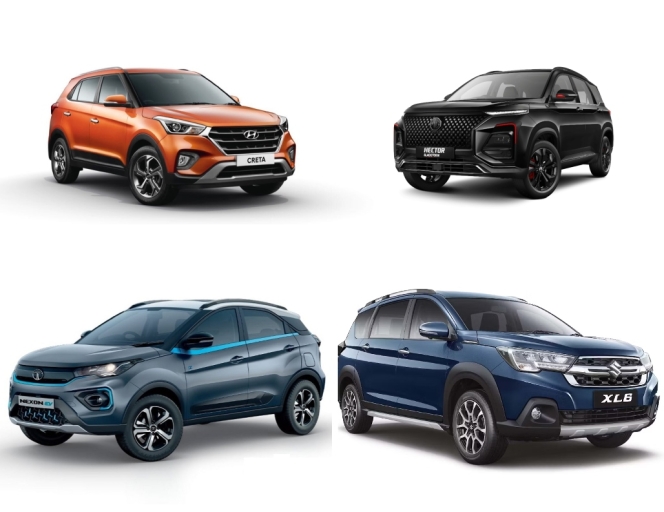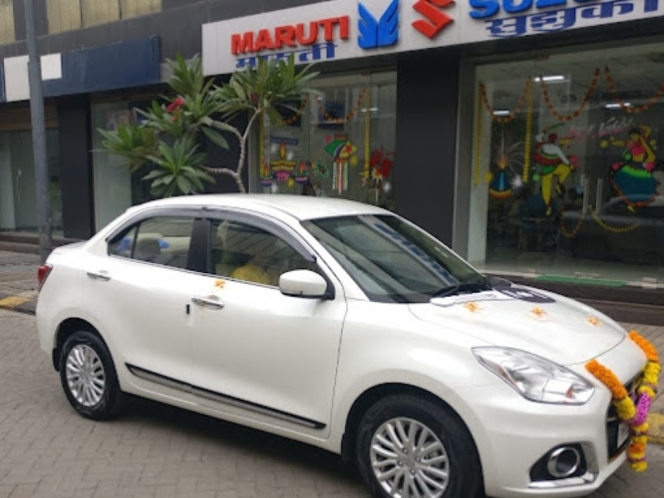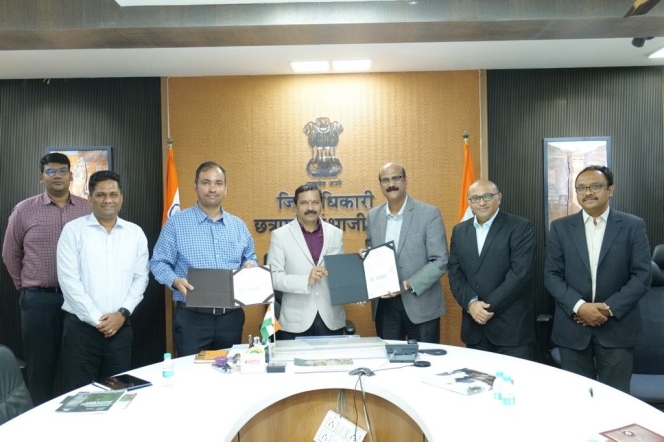
Besides modest growth, the Indian automotive market presented a landscape of shifting tides and rising SUV dominance in FY24.
In the Financial Year 2024-25, the Indian auto market – presenting a picture of modest overall growth, masking in turn significant internal recalibrations – reached wholesale volumes of 4.32 million units, a 2.5 percent increase from FY2023-24's 4.22 million numbers.
This uplift has concealed a market in profound transition, with Utility Vehicles (SUVs and MUVs) robustly driving growth while traditional hatchback and sedan segments faced a continued and concerning decline. The year was also marked by inventory challenges as OEMs and dealers grappled to clear backlogs, suggesting wholesale figures don't always mirror the immediate retail pull.
The unstoppable ascent of SUVs and MUVs
The narrative of FY2024-25 is overwhelmingly dominated by the relentless consumer shift towards SUVs and MUVs. This is no fleeting trend but a fundamental reshaping of market dynamics.
- SUVs: The powerhouse of growth, adding a staggering 242,024 units, an impressive 11.6 percent year-over-year increase. This surge reflects the Indian buyer's preference for commanding road presence, higher ground clearance, perceived safety and versatility.
- MUVs: Also played a crucial role, contributing an additional 40,468 units, marking a respectable 6.3 percent growth, driven by their practicality and space.
The combined growth of SUVs and MUVs (282,492 units) starkly contrasted with the overall market's net increase of 104,245 units, vividly illustrating their role in compensating for declines elsewhere.
The unstoppable ascent of SUVs and MUVs
The narrative of FY2024-25 is overwhelmingly dominated by the relentless consumer shift towards SUVs and MUVs. This is no fleeting trend but a fundamental reshaping of market dynamics.
- SUVs: The powerhouse of growth, adding a staggering 242,024 units, an impressive 11.6 percent year-over-year increase. This surge reflects the Indian buyer's preference for commanding road presence, higher ground clearance, perceived safety and versatility.
- MUVs: Also played a crucial role, contributing an additional 40,468 units, marking a respectable 6.3 percent growth, driven by their practicality and space.
The combined growth of SUVs and MUVs (282,492 units) starkly contrasted with the overall market's net increase of 104,245 units, vividly illustrating their role in compensating for declines elsewhere.
Traditional segments face severe headwinds
Conversely, traditional segments experienced significant contractions:
- Hatchbacks: Once the market's backbone, sales plummeted by 138,595 units (-12.6 percent). Shifting aspirations, narrowing price gaps with compact SUVs and a preference for features over sheer affordability contributed to this.
- Sedans: Continued their downward trajectory, declining by 39,652 units (-10.4 percent). The classic three-box design is increasingly losing out to the allure of SUVs, despite new launches.
The 11.6 percent SUV growth versus the 12.6 percent hatchback decline paints a clear picture of this structural market shift.
OEM performance: A tale of diverging fortunes
The 2.5 percent market growth was not evenly distributed, with some OEMs capitalising on shifts while others struggled.
- Mahindra & Mahindra (M&M): The standout performer
Mahindra recorded phenomenal 19.9 percent growth (91,623 additional units) and was single-handedly responsible for 53 percent of the industry's total net incremental volume growth. The Scorpio range (164,842 units) spearheaded this success. The XUV300 (now 3XO) also saw a significant uptick (58,895 incremental units).
- Toyota Kirloskar Motor (TKM): Riding high on strategy
Toyota registered substantial 25.8 percent growth (63,379 additional units), making it the second-largest contributor to market growth. The Innova range (107,204 units) remained its flagship. The Rumion (+32,378 units) and Hyryder (+11,472 units) were standout performers, benefiting from the Maruti Suzuki alliance.
- MG Motor India: EV strides amidst portfolio shifts
MG grew 12.0 percent (6,648 additional units), largely driven by its Windsor EV (likely Comet and other EVs) with 19,424 units sold. However, the flagship Hector slumped 43.1 percent (-11,815 units), indicating a portfolio rebalancing.
- Maruti Suzuki India: Stagnation for the market leader
India's largest carmaker saw virtually flat sales, with an insignificant increase of 883 units. Only 5 of its 17 models showed positive growth, notably Ertiga (+41,215 units) and Fronx (+31,481 units). The WagonR (198,451 units) reclaimed the top-selling car spot but saw a slight volume decrease. Significant declines in key models like Baleno (-28,446 units) and Swift (-15,680 units) underscored their dependency on the shrinking small car segment.
- Hyundai Motor India: Creta shines amidst overall dip
Hyundai saw a 2.6 percent sales decrease (-16,055 units). The Creta, however, was a formidable force, selling 194,871 units (+32,098 units), making it the third highest-selling model overall. Beyond the Creta and the new Exter (+6,111 units), nearly all other models, including i20 Elite (-14,475 units) and Verna (-14,434 units), faced volume declines.
- Tata Motors: Facing new challenges
Tata registered a 3.0 percent decline (-17,388 units). The Nexon saw a 5.0 percent dip (-8,609 units) despite segment growth. Major declines were seen in Altroz (-34,975 units), Tiago (-16,244 units) and Tigor (-10,422 units). The Punch was the bright spot (196,572 units, +26,496 units) and the new Curvv started contributing (+34,019 units).
- Honda Cars India: Navigating a tough terrain
Honda led the decline among major OEMs with a sharp 23.9 percent drop (-20,659 units). The Amaze was its bestseller (32,703 units) but also declined. The City and the new Elevate SUV also saw significant drops (-6,024 and -11,321 units respectively), highlighting struggles due to a limited SUV portfolio.
- Volkswagen & Skoda: Discovering the worst kept secret (4-metre SUVs being the most consistent growth story)
VW sales dipped 2.2 percent (-967 units) with the Virtus sedan (+338 units, top mid-sized sedan) being the only grower. Skoda saw a marginal 0.8 percent rise (+342 units), largely due to the new Kylaq SUV's promising debut (+10,000 units in 3 months). However, Skoda's Kushaq SUV (-6,037 units) and Slavia sedan (-3,507 units) saw significant declines.
- Renault, Nissan, Jeep and Citroen
All faced significant double-digit percentage declines. Renault was down 16.6 percent (-7,539 units) with all models in red. Nissan, heavily reliant on the Magnite (-2,263 units), also saw a substantial percentage drop (-2,226 units overall). Jeep dropped 27.1 percent (-1,467 units), struggling with competitive pricing and segment gaps. Citroen's sales fell 22.6 percent (-1,902 units), with all products underperforming despite being in popular SUV segments.
Segment analysis: The rise, the fall and the battlegrounds
FY2024-25 saw clear distinctions in sub-segment performance, reinforcing the SUV dominance and the struggles of traditional car forms.
High-growth segments:
- Mid-Sized SUVs (+19.2 percent): One of the hottest battlegrounds (+107,199 units). Key models include Maruti Vitara Brezza, Mahindra 3XO and Kia Sonet. Elevated driving position, perceived safety and road presence are key attractions.
- 4-Metre SUVs (+11.3 percent): A fiercely contested arena with massive volumes (+98,304 units). Leaders included Maruti Fronx, Vitara Brezza, Mahindra 3XO and Kia Sonet.
- Mid-Sized MUVs (+18.8 percent): Practicality and space continue to drive sales (+49,787 units). Toyota Rumion (+266.3 percent) and Maruti Ertiga (+27.5 percent) were key performers. The combined Ertiga/Rumion/XL6 platform sold nearly 250,000 units.
- Mini SUVs (+10.1 percent): Tata’s stronghold dominated by Punch (+15.6 percent, +26,496 units) and Exter (+8.6 percent, +6,111 units).
- Utility SUVs (+16.2 percent): Premiumisation and features drive this segment (+23,421 units). Mahindra Scorpio-N/Scorpio (+23,380 units)
Declining segments:
- Midsize Sedans (-26.2 percent): Rapidly losing appeal (-25,562 units). Only VW Virtus showed minimal growth.
- 4-Metre Hatchbacks (-21.0 percent): Faced a significant downturn (-81,313 units). Even leaders like Baleno (-14.5 percent) and Glanza (-6.5 percent) declined. Tata Altroz (-50 percent) and Hyundai i20 (-20.7 percent) suffered major losses.
- Medium Hatchbacks (-9.0 percent): The Swift segment is under severe stress (-25,562 units)
- Hatchbacks Mini (-7.0 percent): The traditional small car segment continues to shrink (-23,524 units). WagonR volumes dipped slightly
- Utility MUV (-7.1 percent): Traditional workhorses like the Bolero and the Eeco were down (-17,558 units)
Strategic insights & the road ahead
The FY2024-25 performance offers critical strategic takeaways for the Indian automotive market:
- Unyielding SUV Dominance: The shift to SUVs is fundamental, not fleeting. Growth is evident across all SUV sub-segments (mini +10 percent, sub-4m +11 percent, mid-sized +19 percent, utility +16 percent). Manufacturers must continue to align product strategies accordingly.
- Resilience in the Premium Segment: Higher-priced models show stronger growth than budget segments, indicating economic resilience among premium buyers and a maturing market willing to pay for value. The Hyundai Creta's success at a significant price premium exemplifies this.
- Power of Platform Sharing: OEMs leveraging shared platforms (e.g. Maruti-Toyota, Hyundai-Kia) are achieving strong combined numbers and likely better profitability due to economies of scale.
- Polarisation of Manufacturer Performance: Growth is increasingly concentrated. In FY2024-25, Mahindra and Toyota were primary beneficiaries, while many others struggled. Mahindra alone contributing 53 percent of the market's net volume growth suggests a ‘winner-takes-most’ dynamic in key segments.
- Dawn of EV Mainstream Adoption: Traction for models like the MG Windsor EV (19,424 units) signals the beginning of EV mainstreaming. This trend is expected to accelerate with infrastructure development, battery cost reduction and more model choices.
Looking ahead
The Indian automotive market is set for continued evolution. While SUV dominance will likely persist, the pace of electrification, supply chain navigation and agility in responding to consumer and regulatory shifts will be crucial.
Traditional hatchback and sedan segments will continue to face challenges, demanding innovative OEM strategies – be it through feature enrichment, alternative fuels or strategic repositioning – to maintain relevance.
FY2024-25 was a year of clear winners and losers, highlighting the high stakes in this dynamic and rapidly transforming automotive landscape. The ability to anticipate and adapt to these multifaceted shifts will determine future success.
The author is an auto industry veteran and the CEO of Cargraphical Analytics Solutions.
Maruti Suzuki India Reports INR 37.11 Billion Net Profit For Q1 FY2026
- By MT Bureau
- August 01, 2025

Maruti Suzuki India, the leading passenger vehicles manufacturer in the country, has reported its financial results for Q1 FY2026.
The company sold a total of 527,861 vehicles, which comprised 430,889 units in the domestic market and 96,972 units exported. This translated to a sales decline of 4.5 percent in the domestic market, while exports grew by 37.4 percent compared to a year ago.
Maruti Suzuki India’s reported registered net sales of INR 366.2 billion, up 8.11 percent YoY, as compared to INR 338.7 billion last year. The net profit came at INR 371 billion, up 1.7 percent, as compared to INR 364.9 billion last year.
Hyundai Motor India Reports INR 13.69 Net Profit For Q1 FY2026, Down 8%
- By MT Bureau
- July 30, 2025

Hyundai Motor India, one of the leading passenger vehicle manufacturers in the country, has reported its financial performance for Q1 FY2026.
The company’s revenue came at INR 164.129 billion, down 5.36 percent YoY, the EBITDA came at INR 21.85 billion, down 6.62 percent YoY, while net profit at INR 13.69 billion was down 8 percent YoY.
Unsoo Kim, Managing Director said, “We continued our stated strategy of ‘Quality of Growth’ in the first quarter of FY 2026 with balance between domestic & exports, market share and profitability. This strategy helped us to sustain strong EBITDA margin of 13.3 percent during the quarter, despite tough macro-economic environment. Moving forward, we anticipate gradual recovery in domestic demand sentiments, driven by onset of monsoon & festive season coupled with government policy measures, while on the exports front, we are confident to maintain a positive momentum, in line with our growth commitments.”
Hyundai Motor India’s performance was affected by a slowdown in its overall volumes both in domestic and exports markets. Factors such as intensifying competition, geopolitical situation and tariff confusion have affected demand.
Mahindra's Q1 FY2026 Net Profit Rises 24% To INR 40.83 Billion
- By MT Bureau
- July 30, 2025

Mumbai-headquartered SUV major Mahindra & Mahindra has reported a 24 percent YoY increase in consolidated net profit to INR 40.83 billion for Q1 FY2026, supported by strong performances across its automotive, farm and services businesses.
The consolidated revenue grew 22 percent to INR 455.29 billion in Q1 FY2026, while return on equity stood at 20.6 percent.
During the quarter, the company increased its revenue market share in the SUV segment to 27.3 percent, its LCV market share (up to 3.5 tonnes) to 54.2 percent, and its tractor segment market share to 45.2 percent.
The standalone automotive business recorded a 31 percent increase in revenue to INR 259.99 billion, with profit before interest and tax (PBIT) up 24 percent to INR 22.21 billion. SUV volumes reached 152,000 units, contributing to total vehicle sales of 247,249 units.
The farm equipment sector saw revenue rise 12 percent to INR 108.92 billion, with PBIT up 21 percent at INR 18.19 billion. Tractor volumes grew 10 percent to 132,964 units and standalone PBIT margins improved by 130 bps to 19.8 percent.
In the services segment, Mahindra Finance’s assets under management rose 15 percent, while Tech Mahindra’s EBIT margin increased by 260 bps to 11.1 percent, with a 34 percent jump in net profit.
Dr. Anish Shah, Group CEO & Managing Director, M&M, said, “Q1 FY2026 has been an excellent quarter, with broad-based growth across all our businesses. The operating excellence in our Auto and Farm businesses is evident in continued market share gains and margin expansion. TechM is witnessing momentum on deal wins, sustaining cost discipline and is moving steadily towards its FY2027 margin objectives. MMFSL’s calibrated approach to growth is manifesting in stable asset quality, with GS3 under 4 percent as committed. Our Growth Gems are progressing well on their value creation journeys.”
Rajesh Jejurikar, Executive Director & CEO (Auto and Farm Sector), M&M, said, “Our Auto and Farm businesses continue to lead with strong momentum in Q1 FY2026, with gain of 570 bps YoY in SUV revenue share, and 340 bps YoY in LCV (<3.5T) market share. In Tractors, we gained 50 bps YoY to reach 45.2 percent market share, the highest ever in a quarter. Our Auto Standalone PBIT margin (excl. eSUV contract mfg.) improved by 50 bps to 10 percent and core Tractor PBIT margins improved by 100 bps to 20.7 percent.”
Amarjyoti Barua, Group Chief Financial Officer, M&M, said, “We are pleased with the performance of the group in the quarter, despite several macro challenges including geo-political disruptions. It demonstrates the resilience of the group. With our continued focus on capital discipline & operational metrics, we remain committed to shareholder value creation.”
Toyota Kirloskar Motor To Develop Government School Infrastructure In Maharashtra’s Bidkin
- By MT Bureau
- July 30, 2025

Toyota Kirloskar Motor, a leading passenger vehicle manufacturer, has signed a Memorandum of Understanding (MoU) with the Zilla Parishad to upgrade the infrastructure of the Zilla Parishad Kendriya Prathamik School (ZPKPS) in Bidkin, Chhatrapati Sambhaji Nagar, Maharashtra.
The MoU was exchanged at the Collector Office in the presence of Deelip Swami, Collector and District Magistrate, Ankit, CEO of the Zilla Parishad, officials from the Education Department and senior Toyota Kirloskar Motor representatives including Sudeep Dalvi, Chief Communication Officer and Senior Vice-President.
This school development forms part of the automaker’s education-focused corporate social responsibility (CSR) activities and aligns with its recent investment to set up a greenfield manufacturing facility in Maharashtra.
ZPKPS Bidkin, a 100-year-old school currently serving over 800 students, is expected to see enrolment rise to around 1,200. The infrastructure project will be implemented in phases over three years, from 2025 to 2028.
Education continues to be a key area in Toyota Kirloskar Motor’s CSR work, which supports national initiatives such as Skill India and the National Education Policy. The company’s focus includes early childhood care, literacy, and access to learning resources.
Deelip Swami, said, “We welcome this collaboration with Toyota Kirloskar Motor to upgrade the infrastructure of ZPKPS Bidkin, a school that has been central to educating children from economically weaker sections in the region. With student numbers expected to grow significantly, this initiative comes at a crucial time and will greatly enhance the learning environment. Strengthening public education through such collaborative efforts is key to ensuring inclusive development. We appreciate Toyota’s proactive contribution toward this shared goal and are confident that the project will create lasting value for the children and the broader community of Bidkin.”
Sudeep Dalvi, said, “At Toyota Kirloskar Motor, our commitment to nation-building extends beyond mobility solutions. We firmly believe that education is one of the most powerful enablers of long-term, inclusive development. By creating a nurturing and modern learning environment for nearly 1,200 students, we are investing in the potential of future generations. This MoU reflects our continued collaboration with government stakeholders in delivering high-impact interventions that strengthen the social fabric of our communities. This initiative marks the beginning of our engagement in the state, as we move forward, our efforts will remain rooted in our core philosophy of ‘Creating Mobility for All’—that can transform lives and uplift entire communities.”





Comments (0)
ADD COMMENT